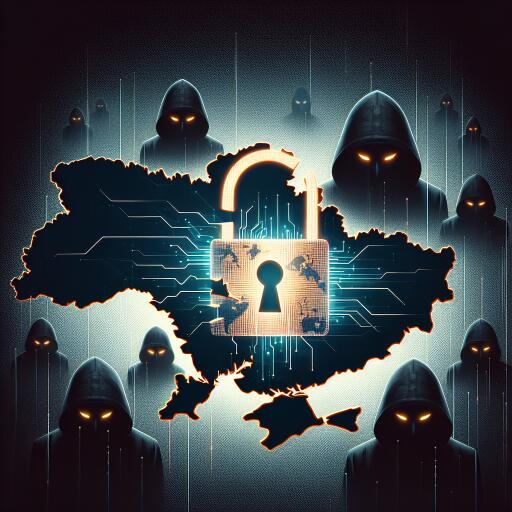Ukraine Blackouts Link to Rising Cybersecurity Threats
In the unwavering cold of a winter night back in 2016, a landmark event in cybersecurity history unfolded across the skyline of Kyiv, Ukraine. The capital experienced an unprecedented blackout, a direct result of malicious code, or malware, designed to autonomously target and disrupt the city’s power grid. This cyberattack, the first of its kind to be recognized, left one-fifth of Kyiv’s population in darkness, marking a sinister advancement in the capabilities of cyber warfare.
Fast forward to six years later, amid the ongoing Russia-Ukraine conflict, a second, more audacious attempt was made. This attack sought to intertwine cyber tactics with physical aggression to disable Ukraine’s power grid entirely.
Despite the clear danger these incidents represented, academics have been slow to delve into the implications of malware attacks on physical infrastructure. The attacks carried out by a Russian intelligence agency against Ukraine spotlight the evolving nature of cyber threats and sound the alarm on the urgent need for enhanced defenses against this form of digital assault.
A groundbreaking paper emerging from this context provides an in-depth analysis of the infamous Industroyer malware attacks, named Industroyer One and Two. Slated for presentation at the prestigious IEEE Symposium on Security and Privacy, the study sheds light on the operation and impact of these malware attacks on physical power systems. This research was spearheaded by a dedicated team at UC Santa Cruz, including Luis Salazar, Sebastian Castro, Juan Lozano, and Keerthi Koneru, under the guidance of Associate Professor Alvaro Cardenas.
“The vulnerability of our systems is starkly evident. The fact that a nation-state deployed malware specifically to disable the power grid of another sovereign nation underscores the significance of these threats,” remarks Cardenas. “We must escalate our preparedness to shield our critical infrastructures from such cyber intrusions.”
Dissecting Industroyer One and Two
The prodigious malware attacks dubbed Industroyer One and Two have been attributed to the GRU, Russia’s military intelligence agency, by the Five Eyes intelligence alliance. While the 2016 incident was a clear showcase of cyber intimidation, the subsequent attack in the ongoing war represents the grim reality of modern warfare’s coupling of cyber and kinetic assaults.
These groundbreaking cyber offensives are among the few known malware attacks targeting physical infrastructure, with the first known case being the Stuxnet virus, aimed at Iranian nuclear facilities. Unlike attacks on digital data or financial systems, Industroyer aimed for real-world impact, causing significant, albeit localized, power outages that required hands-on remediation to restore electricity.
The unique investigative approach by the UC Santa Cruz team involved constructing a simulated power grid environment, or ‘sandbox,’ to observe the malware’s interaction with power system controls. This sandbox, now available for public use, revealed the evolution and specific tactics employed by the malware in each attack, demonstrating a clear trajectory toward more targeted and sophisticated exploits.
Both versions of Industroyer autonomously compromised power grid controls, breaching secured networks designed to be isolated from the internet. However, Industroyer Two showcased a refinement in targeting, eliminating prior bugs and focusing on specific devices within Ukraine’s infrastructure.
Analysis of the attacks’ methodologies indicated that creating imbalance in the power grid, rather than outright shutdowns, could potentially yield a more catastrophic impact. This insight underscores the intricate understanding attackers are developing over how to leverage cyber tactics to create real-world chaos.
Forward Defense: Preparation for the Future
The findings underscore the creeping sophistication of malware attacks targeting critical infrastructure. The imminent risk is not confined to any single nation; the interconnected nature of modern utilities and infrastructure presents a global vulnerability.
In response, researchers are evolving the sandbox into a ‘honeypot,’ a decoy system designed to lure and identify potential cyber threats. This proactive defense mechanism, coupled with the development of AI-driven assistants for real-time threat detection and response, signifies a forward-leaning approach to cybersecurity in critical infrastructure sectors.
While the immediate concern may pertain to Ukraine’s power grid, the broader implications ripple across the globe. As cyber assailants refine their strategies, the collective response from cybersecurity communities and infrastructure operators must be one of vigilance, collaboration, and innovation.
As this research team continues to push the boundaries of our understanding and defense capabilities against malware attacks on physical infrastructure, the lessons learned from Industroyer offer a critical blueprint for enhancing global cybersecurity resilience.









